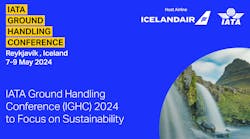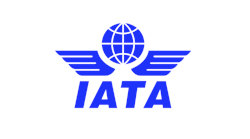WASHINGTON – On Sept. 28, the Federal Aviation Administration (FAA) confirmed the Aeronautical Repair Station Association’s Form E100 as an acceptable method of compliance with U.S. and EASA requirements for inspecting certain new parts. The letter was signed by the Manager of the FAA’s Aircraft Maintenance Division (AFS-300) and delivered to ARSA’s Managing Director and General Counsel Marshall S. Filler. It also confirmed that Form E100 was consistent with agency guidance (FAA Notice 8900.380) pertaining to the documentation required under the bilateral aviation safety agreement between the United States and European Union, as reflected in change 6 to the U.S.-EU Maintenance Annex Guidance (MAG).
The association had released the form (which is available free of charge to members) on Sept. 21 to provide repair stations a method of complying with new demands from the European Aviation Safety Agency (EASA) in time to meet an Oct. 1 deadline. On that date, the European regulator will begin requiring that specific documentation accompany new parts to be installed in articles subject to the MAG; that is, those articles approved for return to service by a dual release.
ARSA developed Form E100 for its members to record an inspection of a new article received without the documentation required by the MAG. The FAA’s confirmation of the form’s acceptability guarantees that the U.S. aviation maintenance industry will have an another method of compliance at its disposal. On Oct. 13, ARSA will host an online training session on MAG compliance, which will focus on providing instruction for use of the form.
“This is another significant step as U.S. industry transitions to the new EASA requirements,” Filler said. “It is a hard-earned success. For more than a year, ARSA, its industry allies and member companies have been working diligently to overcome the biggest regulatory obstacles. We used a systems approach by involving the certification and flight standards organziations from both [U.S. and European] agencies. EASA and the FAA should be commended for their willingness to consider alternate approaches and for giving U.S. industry the time needed to adjust their internal processes. Notice 8900.380 and the resulting ARSA New Part Inspection Form are critical for maintenance providers because, in spite of the FAA’s efforts to facilitate production approval holders’ issuance of Form 8130-3, it is still not required under the FAA system. And while we strongly encourage ARSA members to include specific language requesting this form in their purchase orders to U.S. PAHs, they will have an alternate path to compliance if the required documentation is not provided.”
The association has been leading an industry wide effort to “smooth” implementation of this new requirement since September 2015. To review ARSA’s work, visitarsa.org/mag.
Member companies interested in utilizing the form should visit arsa.org/publications.
ARSA is the only association devoted to the unique needs of the global civil aviation maintenance industry. It is dedicated to helping member companies operate more efficiently and effectively, while continuing to ensure the safety of aircraft worldwide. To learn more about the association’s dedicated work on behalf of both industry stakeholders and the flying public, please visit ARSA.org.





